Supreme Court Overturns Local Hiring Preferences
September 24, 2019
Ohio Capitol Connection
Facilities Commission Cites Improvements in 2018 Review
The Ohio Facilities Construction Commission (OFCC) received its “2018 Executive Director’s Report” Thursday (10/25/2018), which provided a broad overview of its activities over the past year, highlighting the increase in projects being completed on-time and on-budget.
Commission staff member Jeff Westhoven informed the body that 88.9 percent of projects were on or under budgets, 77.8 percent of projects were on or ahead of schedule and 100 percent of agency facilities have been condition assessed within the past fiscal year, among other positive indicators.
In the Ohio Auditor’s FY17 Report, no negative findings appeared, and the OFCC is currently overseeing more than $2.1 billion worth of projects.
He said 61 percent of Ohio school districts have received interactions from the OFCC, which is a key way new construction projects are affecting Ohioans. He highlighted news clippings lauding new school facilities, and he showed a picture of young students in their new building for the first time, noting a “100 percent smile rate.”
Having happy students can decrease absenteeism rates, he said, which can be improved by modernizing school learning environments.
He added that Ohio is the top state in the nation for its number of environmentally friendly schools, with 321 Leadership in Energy and Environmental Design (LEED)-certified schools. According to Westhoven, schools using the Ohio School Design Manual typically save $100,000 in annual energy costs.
Regarding state services, Westhoven said new energy practices in the Ohio Department of Rehabilitation and Correction and the Ohio Department of Administrative services have saved the state over $50 million annually.
In addition, he said one-of-five Encouraging Diversity, Growth and Equity (EDGE) dollars is spent towards OFCC projects.
Looking at the recent consolidation of three organizations into the OFCC (formerly the Ohio School Facilities Commission, the Office of State Architect and the Cultural Facilities Grants Program), Westhoven said that was a success as well. He noted a 17 percent reduction in spending on personnel and leased space, an adoption of the best practices of each organization and a streamlined information technology system that allows for quicker processing and completion of contracts.
Also during the meeting, the OFCC approved its “Priority Order of Assistance List” that determines which schools are next in line to receive renovations and it approved a “Master Facilities Plan and Project Agreement” for construction and renovations in Little Miami Local School District. The full cost of that project is expected to be $51.6 million.
2018 Ohio Design Award Winners
Congratulations to our 2018 design award winners! These awards recognize the impact that various firms and individuals have made to the profession. See more info about the winning submissions here.
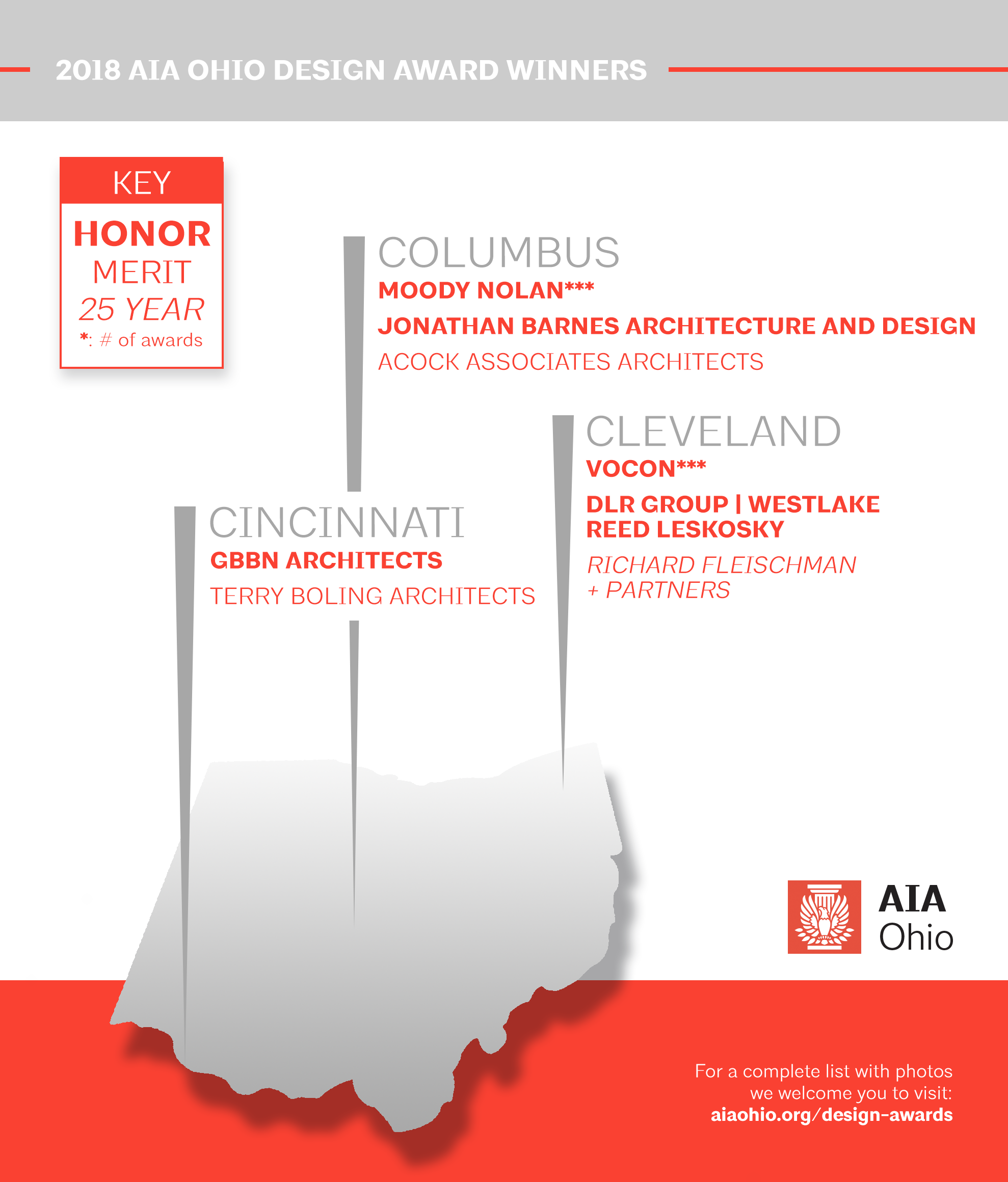

AIA Ohio 2018 Convention Keynotes
 Thursday Keynote: Toshiko Mori, FAIA
Thursday Keynote: Toshiko Mori, FAIA
On Thursday, Oct. 4, convention attendees will hear from Toshiko Mori, FAIA, from Toshiko Mori Architect in New York. The firm is widely known for over thirty years of innovative and influential work in a diverse body of projects that have received numerous design awards. Her designs demonstrate a thoughtful sensitivity to detail and involve extensive research into the site conditions and surrounding context. Toshiko Mori Architect has worked on a broad range of programs including urban, civic, institutional, cultural, residential, museum and exhibition design.
 Friday Keynote: Christopher Sharples, AIA
Friday Keynote: Christopher Sharples, AIA
On Friday, Oct. 5, Christopher Sharples, AIA, from SHoP in New York will join us offering a keynote presentation as well as his perspective as the jury chair for the AIA Ohio Design Awards. Since 1996, SHoP has set the standard for creative invention in the field of architecture and modeled a new way forward with its unconventional approach to design. As a founding partner, Sharples has been at the center of this collaborative practice for nearly twenty years, during which time the studio has grown to over 180 people, with projects completed or underway on five continents. Celebrated designs such as the Barclays Center, Google’s Mountain View offices, and most recently, the offices for frog design have cemented SHoP’s reputation for smart, transformative design. In 2014, Fast Company named SHoP the “Most Innovative Architecture Firm in the World.”
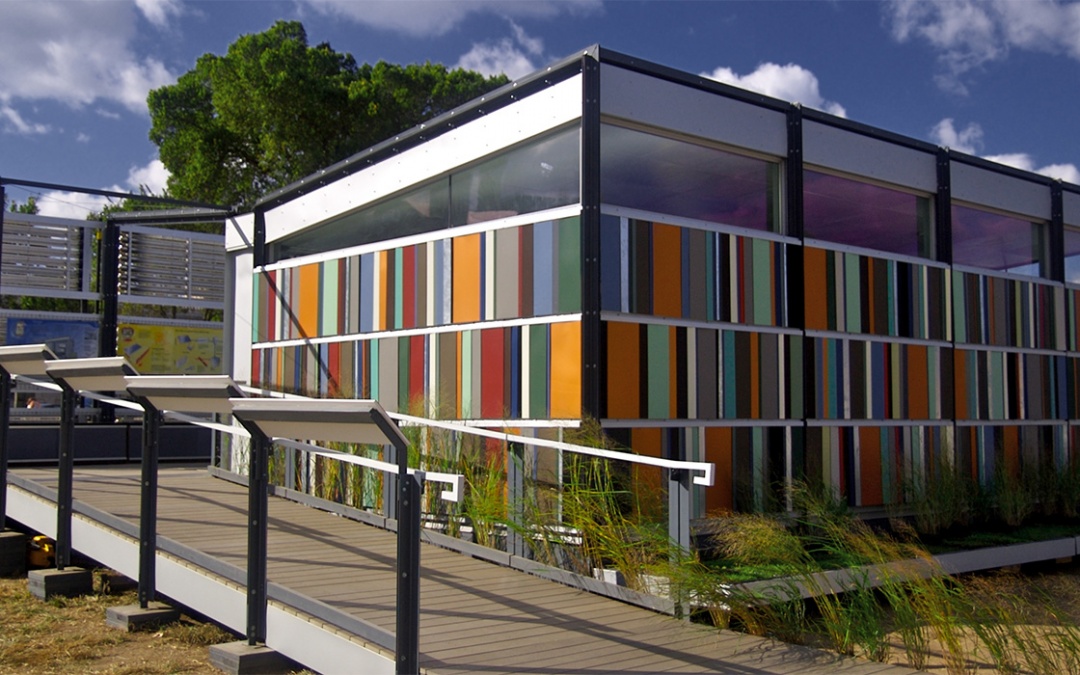
Back to School: Ohio Architectural Schools
Students across the state are heading back to school at Ohio’s architectural schools. Our state is home to a number of renowned programs tailored to aspiring architects. Here’s a look at the various architectural schools across Ohio.
At Ohio State University, architecture students study at the Knowlton School within the College of Engineering. The school offers undergraduate and graduate programs in three academic sections: architecture, landscape architecture, and city and regional planning. The School is based out of Knowlton Hall, a highly lauded 165,000-square-foot facility designed by Mack Scogin Merril Elam Architects of Atlanta with Wandel & Schnell of Columbus (now WSA Studio). Knowlton students work collaboratively with students at host institutions in destinations around the world, including Ghana, Thailand, China and Germany; engage in ongoing post-Katrina redevelopment work; and partner with local organizations to find creative design solutions in Columbus.
University of Cincinnati’s College of Design, Architecture, Art, and Planning is ranked among the best in the country, with I.D. (International Design) listing UC among the globe’s top 10 design schools—the only public institution to make the list. The college is housed in the Aronoff Center for Design and Art, an internationally acclaimed building designed by renowned architect Peter Eisenman. Undergraduate degrees are offered in architecture and interior design, and graduate offerings include master’s degrees in architecture, interior design, science in architecture; as well as a PhD of architecture.
At Miami University in Oxford, the Department of Architecture and Interior Design offers an undergraduate Bachelor of Arts in Architecture and a professional Master of Architecture, in addition to an undergraduate Bachelor of Fine Arts in Interior Design. Miami offers off-campus programming, as well, such as a semester-long Rosenheim Exchange Program in Rosenheim, Germany; an immersive residency in Cincinnati’s Over-the-Rhine neighborhood, and a design build program at Frank Lloyd Wright’s Fallingwater.
Northeast of Akron, Kent State University’s College of Architecture & Environmental Design offers a variety of programs and degrees in architecture, including masters’ programs in architecture and environmental design, urban design, health care design and landscape architecture. The innovative Kent State University Cleveland Urban Design Collaborative is a non-profit urban design practice as well as an off-campus educational facility offering studio space, classrooms, a library and a computer lab.
Bowling Green State University
At Bowling Green, the Department of Architecture & Environmental Design is part of the College of Technology Architecture and Applied Engineering. The department offers two programs, a bachelor of science in architecture and a master of architecture. BG’s program is small by design, with an emphasis on individual attention to students at both the undergraduate and graduate level.
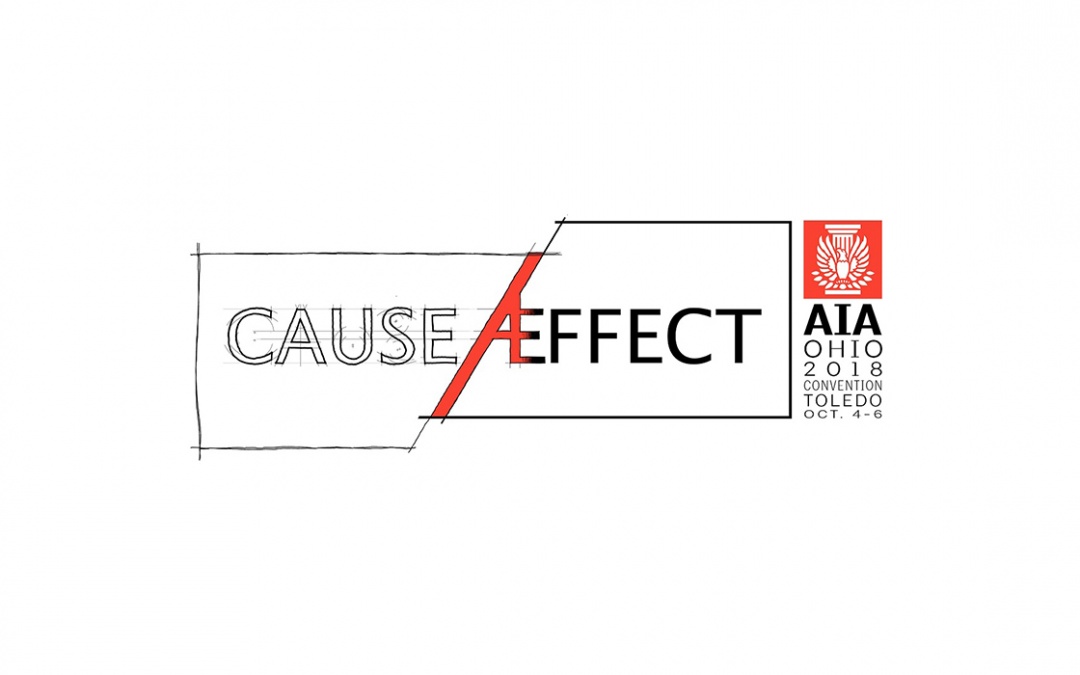
Save the Date: AIA Ohio 2018 Convention runs Oct. 4-6
You’re going to want to mark your calendar to make sure you don’t miss the AIA Ohio 2018 Convention, set for October 4-6, 2018, at the Renaissance Toledo Downtown Hotel. We’ll honor our 2018 Ohio Design Awards winners during a dinner on Friday, October 5.
Each year, we spotlight distinctive projects designed by Ohio architects with the AIA Ohio Design Awards, chosen by a jury of exceptional and noteworthy peers from the field of architecture.
This year’s jury chair is renowned New York architect Chris Sharples, Principal and Owner of SHoP Architects in New York City. SHoP Architects has a mission to prove that intelligent, evocative architecture can be made with real-world constraints, and in 2014 Fast Company recognized the studio as the “Most Innovative Architecture Firm in the World.”
The AIA Ohio Design Awards program honors the best of Ohio architecture by awarding projects that show attention to high quality design, performance and commitment to AIA’s 10 principles of livable communities.
“We have great architects in Ohio doing amazing work,” says AIA Ohio Executive Director Kate Brunswick.
In 2017, AIA Ohio Design Awards Honor Award winners included the simple and elegant Columbus Metropolitan Library’s Whitehall Branch Library by Jonathan Barnes Architecture and Design and the Wilson Road Trailhead, an urban cyclist hub and park designed by WSA Studio.
The theme for this year’s AIA Ohio Conference is cause and effect, and attendees can choose from between three tracks:
- Track 1: Cause. Sample session: “Planning Spaces for Accessibility: Universal Design.”
- Track 2: Affect. Sample session: “Going Beyond Green: Creating a More Sustainable Community”
- Track 3: Effect. Sample Session: “The Failure of Workplace Design in America Today”
More than 300 people representing over 150 different architecture firms from across the state and region registered for the AIA Ohio 2017 Convention. Watch for registration information coming soon at aiaohio.org.
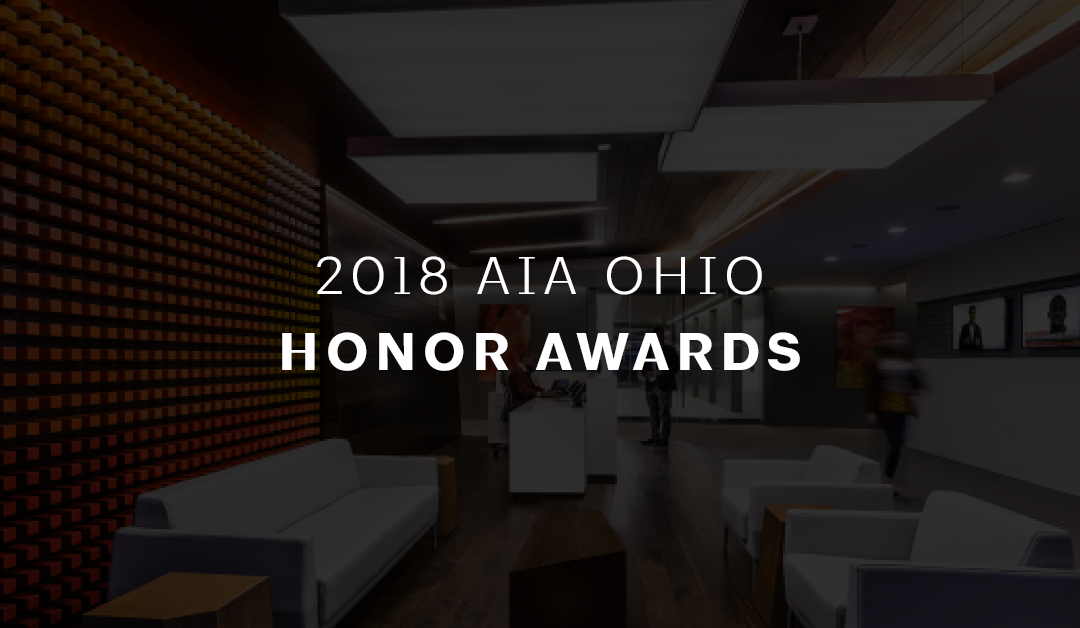
AIA Ohio 2018 Honor Award Winners
Congratulations to the AIA Ohio 2018 Honor Award recipients. These awardees will be recognized at the 2018 AIA Ohio Conference in Toledo, October 4-6, 2018.
Gold Medal Award
The Gold Medal is the highest honor that AIA Ohio can bestow on a member. The AIA Ohio Board of Directors confers this award, which recognizes the exemplary contributions and significant accomplishments of AIA Ohio members.
With more than thirty years of service to the architectural community and AIA, Bruce Sekanick, FAIA, OAA is the AIA Ohio Gold Medal Award recipient for 2018. Throughout his tenure with AIA which began in 1981 on the campus of Kent State University, Bruce has served his regional community, AIA Eastern Ohio Region, AIA Ohio, and the national AIA community where he currently serves as the Secretary. His roles have ranged from committee member to board member to board leadership to advocate and beyond. Bruce’s accolades were numerous and we congratulate him on this well-deserved honor. In the words of past AIA Ohio President Terry Welker, “Bruce personifies leadership in AIA first, by his own daily example and second, by enabling others to realize they have a voice, a talent and a duty to serve society through architecture.”
Read Bruce’s entire submission, including details of past roles, assistance in grassroots campaigns and endorsements from several key colleagues serving AIA for the betterment of our industry.
Gold Medal Firm Award
The AIA Ohio Gold Medal Firm Award is the highest honor AIA Ohio can bestow on an architectural firm. The AIA Ohio Board of Directors confers this award, which recognizes the exemplary contributions and significant accomplishments of firms lead by AIA Ohio members. This award recognizes a firm’s ongoing commitment to a focus on design excellence, innovation in practice and design, or the advancement of firm culture, each of which contribute to the firm’s unique place as a leader in the profession.
This year, AIA Ohio recognizes City Architecture with the Gold Medal Firm Award for 2018. City Architecture was founded in 1989 by Paul Volpe, Mark Dodds and Dominick Durante with a vision of creating high quality architecture in established neighborhoods and the urban core. In 2014 ownership of the firm was transferred to three senior principals – August Fluker, John Wagner and Alex Pesta all of whom are registered architects and AIA members.
The impact this exemplary organization has made and continues to make on the skylines in and around the Cleveland area is immeasurable. City Architecture has amassed countless awards over the years and established itself as an innovative housing design firm for both market rate and affordable projects.
Take a moment to view their complete submission and notable portfolio.
Mentor Award
The AIA Ohio Mentor Award recognizes a member who has demonstrated strong leadership, guidance and service in the support of mentorship to fellow professionals or in her/his community. Awarded by the AIA Ohio Board of Directors, this award recognizes the exemplary contributions and significant accomplishments an individual has made to the profession via mentorship.
The 2018 AIA Ohio Mentor Award recipient is Moody Nolan Project Manager Sara Boyer, AIA. Sara advocates for membership and cultural change both inside her firm and in the profession. She is described by Timothy C. Hawk, FAIA as “an architect of high character and great compassion who has advanced the next generation of architects through mentorship programs.”
In addition to Sara’s influence on the local level, she has expanded her sphere of influence at the national level through her participation on the AIA’s National Practice Management Knowledge Committee Advisory Board.
Review Sara’s recommendations and submission.
Public Service Award
The AIA Ohio Public Service Award recognizes a member who has made a significant impact in his/her community, as well as to the profession, through public service.
AIA Ohio is proud to announce Terry Welker, FAIA as the 2018 Public Service Award recipient. Terry has been the Chief Building Official for the City of Kettering since 2000. He believes that in order to change the world we can’t just be physical modifiers, we also have to be social modifiers and become teachers.
Terry’s public service ranges from industry impact through AIA leadership, lectures, juries, and arts advocacy. Join the AIA Ohio Board in thanking Terry for his significant contribution to his community.
Browse Terry’s extraordinary submission.
Congratulations to our 2018 AIA Ohio Honor Award recipients.
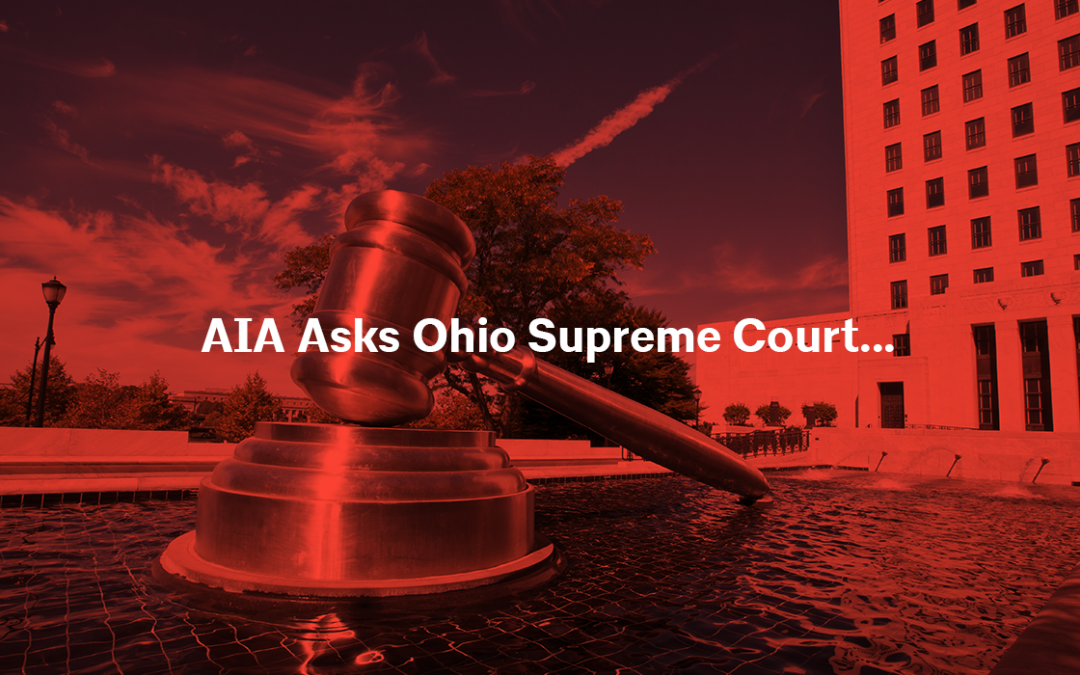
AIA Ohio Asks the Supreme Court to Bar Untimely Malpractice Claims
On July 12, 2018, AIA Ohio filed an amicus curiae (“friend of the court”) brief with the Ohio Supreme Court in support of a local architect’s reliance on Ohio’s Statute of Repose, which bars professional malpractice claims from arising after ten years, according to AIA Ohio Executive Vice President, David Field.
In 2015, a local school district filed a lawsuit against its architect arising from alleged negligent design for the construction of a K-12 school building, which was completed nearly 13 years earlier in 2002.
The school district claimed condensation, moisture intrusion and other deficiency issues in various areas of the school building arose “from a defective through-wall flashing system, defective roofing system, and improper installation of insulation….” as a result of “improper design and construction….”
In enacting the current Statute of Repose, the Ohio General Assembly stated its intent “to promote a greater interest than the interest underlying the general four-year statute of limitations“ in non-codified law, 2004 Senate Bill 80 § 3, eff 4-7-05:
To recognize that, subsequent to the completion of the construction of an improvement to real property, all of the following generally apply to the persons who provided services for the improvement or who furnished the design, planning, supervision of construction, or construction of the improvement:
(a) [Architects] lack control over the improvement, the ability to make determinations with respect to the improvement, and the opportunity or responsibility to maintain or undertake the maintenance of the improvement;
(b) [Architects] lack control over other forces, uses, and intervening causes that may cause stress, strain, or wear and tear to the improvement.
(c) [Architects] have no right or opportunity to be made aware of, to evaluate the effect of, or to take action to overcome the effect of the forces, uses, and intervening causes ….
The School argued that the Statute of Repose does not apply to actions for breach of contract, but only for personal injury actions (“tort”). The School further argued that the Statute of Repose does not apply to the State, and that the contracts are State contracts due to the State funding of the construction.
The Third District Court of Appeals would bar the School’s untimely lawsuit under the Statute of Repose but-for outdated Supreme Court precedent:
The statute [of repose] specifies that NO cause of action for damages to real property, resulting from the improvement to that real property, can be brought after 10 years from the time the improvements were substantially completed. R.C. 2305.131. The statute does not limit it to claims for torts only. Regardless of what the School labels this claim, the School is trying to collect damages resulting from an improvement, i.e. the Project, to real property. The statute specifically prohibits this. Thus, it would appear that the statute specifically denies the claims in this case.
The Court of Appeals did not rule on whether the Statute of Repose applies to the State as a moot issue.
The architect appealed, and the Ohio Supreme Court awaits briefing from the parties before hearing arguments.
AIA Ohio’s brief and the briefing of the other parties are available on the Supreme Court’s website at:
https://www.supremecourt.ohio.gov/Clerk/ecms/#/search
New Riegel Local School Dist. Bd. of Edn. v. Buehrer Group Architecture & Eng. Inc., Case Nos. 2018-0189 and 2018-0213

AIA Ohio Asks the Supreme Court to Prevent Local Hiring Preferences
Ohio architects are asking the Ohio Supreme Court to prevent local hiring preferences, according to AIA Ohio Executive Vice President, David Field. On June 29, 2018, AIA Ohio filed an amicus curiae (“friend of the court”) brief with the Ohio Supreme Court in support of the State of Ohio, to prevent local residency quota requirements in public works construction.
Field said, “the 131st General Assembly passed House Bill 180 in 2016 to enact current R.C. 9.75 prohibiting residency requirements for construction employment.”
That section provides that “No public authority shall require a contractor, as part of a prequalification process or for the construction of a specific public improvement or the provision of professional design services for that public improvement, to employ as laborers a certain number or percentage of individuals who reside within the defined geographic area or service area of the public authority.”
The City of Cleveland Ordinance Chapter 188 nevertheless remained on the books, requiring that a minimum of 20 percent of the total construction work hours be performed by Cleveland residents, and that no fewer than 4 percent of those resident work hours be performed by low-income persons.
Cleveland sued the State of Ohio, claiming that its Ordinance prevailed over the state prohibition. The Eighth District Court of Appeals (Cuyahoga County) found the state statute unconstitutional, violating Constitutional “Home Rule” which authorizes cities to pass certain laws in conflict with state statute.
Noting that Cincinnati, Columbus, and Akron also enacted similar residency requirements, the appellate Court ruled that, “It is readily apparent that R.C. 9.75 is no more than an attempt to preempt powers of local self-government and to restrict the contract terms between public authorities and contractors who choose to bid on local public improvement contracts.”
The State of Ohio appealed, and the Ohio Supreme Court awaits briefing from the parties before hearing arguments and deciding the fate of the statute.
Field says, “AIA Ohio has called to the Supreme Court’s attention the fact that the legislature also enacted its legislative intent to protect design professionals in the statute.” As expressed by HB 180 Sponsor, Representative Ron Maag (62nd House District, Warren County), on October 21, 2015, “The purpose of this legislation is to protect taxpayer dollars by prohibiting the state and local governments from imposing residency requirements on contractors and design professionals.”
AIA Ohio’s brief and the briefing of the other parties are available on the Supreme Court’s website at: https://www.supremecourt.ohio.gov/Clerk/ecms/#/search
Case No. 2018-0097
– 30 –
2018-1019 Group Rating Safety Accountability Letter
July 2018
Dear Employer:
Each year Ohio employers have the opportunity to participate in BWC’s Group-Experience-Rating Program or Group-Retrospective-Rating Program. While these programs are not required, they do provide you with an opportunity to significantly reduce your workers’ compensation premiums, while increasing your awareness of safety and risk-management strategies.
Workplace safety is an important component of these programs. To succeed in accident prevention, we encourage you to use the many resources available to you. We believe a group-rating program is a partnership that includes you and your employees, your sponsoring organization or third-party administrator (TPA) and BWC. Each has specific roles and responsibilities, all designed to assist in preventing workplace accidents. This letter outlines the safety services expectations you should have as an employer enrolled in a group-rating program.
The employer will:
- Maintain a safe workplace;
- Attend safety training to enhance workplace safety;
- Use BWC’s safety services as needed;
- Fulfill the required two-hour training requirement and provide proof of attendance to sponsor for claim(s) occurring within the last year.
The certified primary and affiliated sponsoring organizations will:
- Sponsor eight hours of safety training (this may be done at one time or may be provided incrementally as long as the total is at least eight hours);
- Provide information regarding safety resources to group members;
- Possibly assist an employer in achieving its safety needs;
- Manage employer fulfillment of the two-hour training requirement, where applicable;
- Publish this letter to group members.
The TPA may:
- Assist sponsoring organizations with fulfilling the group-rating safety requirements;
- Assist an employer with its safety needs;
- Work in conjunction with sponsors to develop safety training and deliver safety resources;
- Provide resources for claims handling.
BWC will:
- Monitor all group-rating safety activities to confirm requirements are met;
- Remain in communication with sponsoring organizations to provide recommendations for fulfilling safety requirements;
- Provide safety training through Ohio’s Center for Occupational Safety & Health;
- Offer on-site safety consultation (hazard assessments, air and noise monitoring, ergonomics evaluation, training) by a BWC safety professional;
- Offer publications and videos for safety program support;
- Conduct employer visits to confirm the employer is meeting group-rating requirements, when appropriate.
The goal of this collaborative effort is to make sure all your safety needs are met. Using these resources will assist you in preventing accidents, reducing claims costs and achieving the highest discounts possible. Below you’ll find contact information for various resources.
Group sponsor:
TPA: CareWorksComp www.careworkscom.com
BWC: https://www.bwc.ohio.gov/employer/services/safetyhygiene.asp, groupratingsafety@bwc.state.oh.us
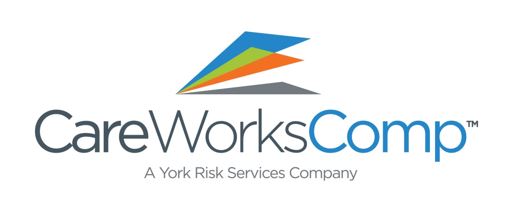
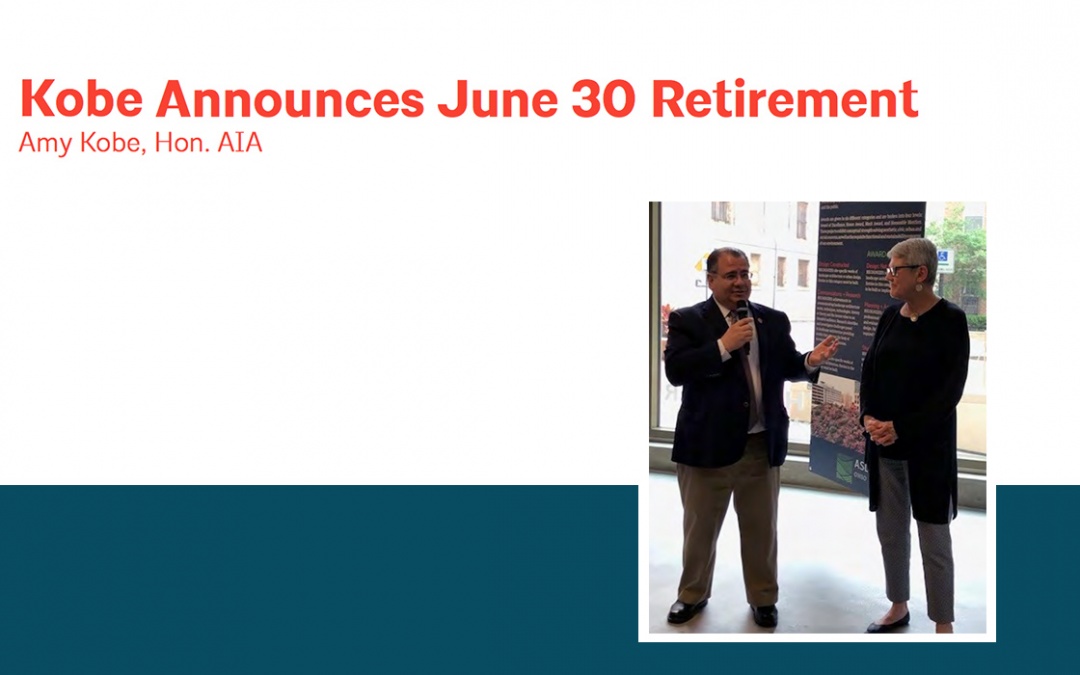
Amy Kobe Announces June 30 Retirement
It seems like just a short time ago that I began my tenure as Executive Director of the Ohio Architects Board. In reality, it’s been fourteen years since I left the position of Executive Director of AIA Columbus for the Board…
Looking back on my twenty plus years of service to the profession, some of the significant accomplishments during my tenure with the state of Ohio are:
- Creation of the fee reimbursement program for the Architectural Experience Program (AXP, formerly IDP). The state reimburses students for the $100 NCARB AXP enrollment fee as they begin the path to licensure.
- Allowing the use of the titles, “Intern Architect” and “Architectural Intern”.
- Creation of the Emeritus Architect category.
- Implementation of the mandatory Continuing Education requirement.
- Changing the name of the Board to Ohio Architects Board from the Ohio Board Examiners of Architects.
- Helping to conceive the pilot program for the Integrated Path to Architectural Licensing (IPAL), allowing students enrolled in participating accredited degree programs the opportunity to take the ARE before graduation, thus shortening the path to licensure without diminishing the rigor of the licensing process. In Ohio, the University of Cincinnati is participating in the IPAL pilot program.
- Creation of rules allowing for the use of electronic seals and signatures.
Despite these accomplishments, it is the people I will miss the most: the wonderful members and staff of the Ohio Architects Board, AIA Ohio and its components, NCARB, and all of the licensees and candidates! I have made many enduring friendships these past 21 years. My last day with the Board is June 30; a successor has not been announced. Thank you for the honor of serving the profession!
Amy Kobe, Hon. AIA
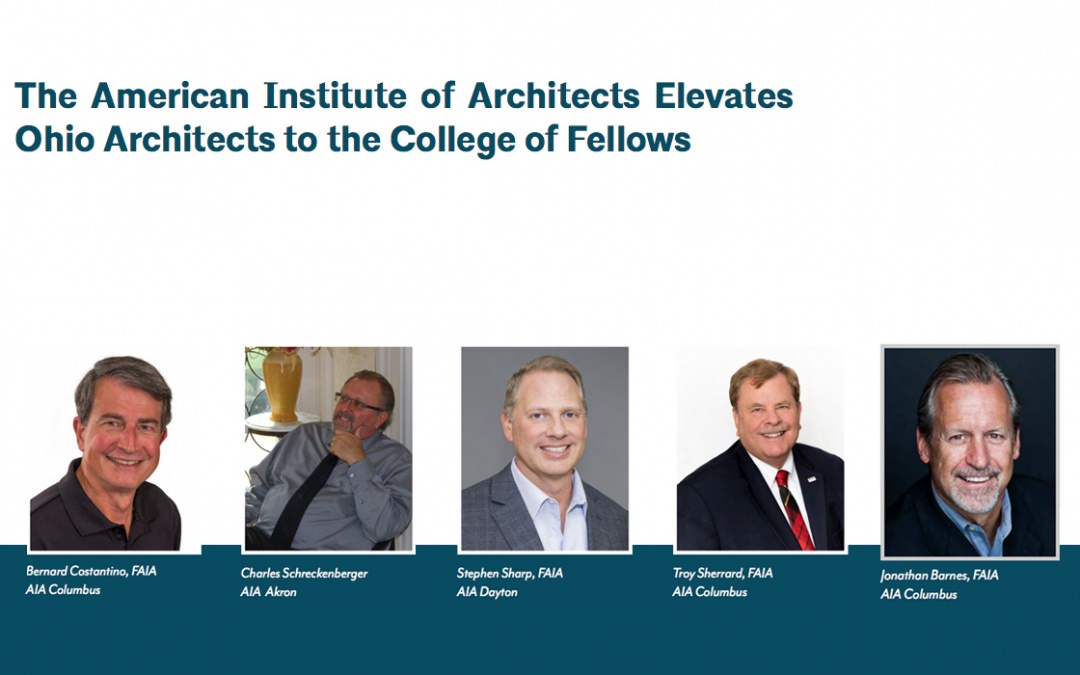
The American Institute of Architects Elevates Ohio Architects to the College of Fellows
AIA Fellowship Recognizes Significant Contributions to the Profession of Architecture and Society
The 2018 Jury of Fellows of the American Institute of Architects elevated five AIA Ohio members to its prestigious College of Fellows, an honor awarded to members who have made significant contributions to the profession. This year 152 AIA members were elevated and will be honored at an investiture ceremony at the AIA Conference on Architecture in New York City. The Fellowship program was developed to elevate those architects who have made a significant contribution to architecture and society and who have achieved a standard of excellence in the profession. Out of a total AIA membership of over 91,000, less than 4 percent are distinguished with this honor. Election to fellowship not only recognizes the achievements of architects as individuals, but also their significant contribution to architecture and society on a national level.
